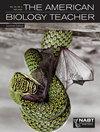The Mirage of Health
IF 0.3
4区 教育学
Q4 BIOLOGY
引用次数: 21
Abstract
I am writing this column in late August, so it's difficult to predict what the H1N1 flu situation will be by like the time it is published towards the end of the year. Since there is already a pandemic, the spread of the virus will likely have picked up more steam by that time, but how much steam it is difficult to forecast So I'm not even going to try. Instead, I will make a prognostication that is a safer bet: there will continue to be health issues of some kind at the end of this year, at the end of this century, and on to the end of this millennium. I am using as my crystal ball a book by Rene Dubos (1901-1982) called Mirage of Health (1959). It seems appropriate to examine this book on the fiftieth anniversary of its publication, because it is at least as relevant today as it was at the time it came out. Also, since this issue of ABT is devoted to health and medicine, this work is a great reminder of the limits of the latter to ensure the former. The book's main argument is that, as the title suggests, the quest for perfect health is an unending one, just as walking towards a mirage is a fruitless task. Dubos contends that the idea that better days are coming, that if we get rid of the latest scourge to health, life will be wonderful and we will to a ripe old age in good health, just isn't going to happen. In other words, finding the "cure" for cancer or HIV infections or ... isn't going to make life wonderful. He cites as support for his view the fact that finding a cure for tuberculosis (TB), the scourge of the 19th century, did not lead to a health utopia. In fact, thanks to life style changes rather than medical advances, the incidence of TB had already decreased significantly even before an antibiotic treatment for this bacterial infection became available in the 1950s. I have been reminded of Dubos's book frequently over the years since I first read it in the 1970s. Most particularly, it came to mind in the 1980s when HIV and then Ebola virus entered our consciousness. For those who don't remember these times, both infections came as rather a shock to the American public who had become accustomed to the idea that infectious disease was no longer fatal. To put it very simply, bacterial infections could be treated with antibiotics and viral diseases prevented with vaccines. Then AIDS arrived, an infectious, incurable and in those early years, almost inevitably fatal, disease. This was not something we were prepared for because many of us, the baby boomers who had swelled the population, had never experienced the years when bacterial pneumonia was dangerously common and a bad cut could lead to an uncontrollable infection. Microbiology How could Dubos have been so prescient when most Americans were shocked by this onslaught and the others to follow? First of all, he was a microbiologist. He was already aware, more than most people of the time, that bacteria were developing resistance to antibiotics, that the reign of these drugs was likely to be short-lived and could only be extended by human ingenuity working to keep one step ahead of the microbes. Dubos was born and educated in France at the beginning of the 20th century, when French microbiology was still very much under the sway of Louis Pasteur's intellectual heritage. He came to the United States and spent most of his career as a researcher at what is now Rockefeller University in New York. There he discovered gramicidin, the first clinically tested antibiotic. While it didn't prove to be an effective drug, Dubos's research did yield useful information on antibiotic dynamics both in culture and in living organisms. When penicillin was discovered and being developed as a drug, he was involved in the early work done in the United States. He also did research on tuberculosis and pneumonia. It was Dubos's studies on how bacteria became resistant to the effects of antibiotics that led him to consider the theme of health as a mirage. …健康的幻影
我是在八月底写这篇专栏的,所以很难预测H1N1流感的情况会是什么样子,就像它在年底发布的时候一样。由于已经有了大流行,到那时病毒的传播可能会加速,但很难预测有多快,所以我甚至不会去尝试。相反,我将做出一个更安全的预测:在今年年底,在本世纪末,直到本世纪末,将继续存在某种健康问题。我用Rene Dubos(1901-1982)的书《健康的幻影》(Mirage of Health, 1959)作为我的预言球。在这本书出版五十周年之际审视它似乎是恰当的,因为它在今天至少与它出版时一样具有现实意义。此外,由于这一期ABT致力于健康和医学,这项工作是一个很好的提醒,后者的限制,以确保前者。这本书的主要论点是,正如书名所示,对完美健康的追求是永无止境的,就像走向海市蜃楼是一项徒劳的任务一样。杜博斯认为,美好的日子即将到来,如果我们摆脱了对健康的最新祸害,生活将会很美好,我们将健康地进入老年,这种想法是不会发生的。换句话说,找到癌症或艾滋病毒感染的“治疗方法”或……不会让生活变得美好。他引用了一个事实来支持他的观点,即找到治疗结核病的方法(结核病是19世纪的祸害)并没有导致健康乌托邦。事实上,由于生活方式的改变而不是医学的进步,结核病的发病率在20世纪50年代出现抗生素治疗这种细菌感染之前就已经显著下降了。自上世纪70年代第一次读到杜博斯的书以来,多年来我经常想起这本书。尤其是在20世纪80年代,当艾滋病毒和埃博拉病毒进入我们的意识时,它出现在我们的脑海中。对于那些不记得那段时间的人来说,这两种传染病对美国公众来说都是相当震惊的,因为他们已经习惯了传染病不再致命的想法。简单地说,细菌感染可以用抗生素治疗,病毒性疾病可以用疫苗预防。后来,艾滋病来了,这是一种传染性疾病,无法治愈,在早期,几乎不可避免地会致命。这是我们没有准备好的,因为我们中的许多人,婴儿潮一代的人口膨胀,从来没有经历过细菌性肺炎是危险的常见,一个严重的伤口可能导致无法控制的感染。【微生物学】当大多数美国人都对这次袭击和随后的袭击感到震惊时,杜博斯怎么能如此有先见之明呢?首先,他是个微生物学家。他比当时的大多数人都更清楚地意识到,细菌正在对抗生素产生耐药性,这些药物的统治很可能是短暂的,只有人类聪明地努力,才能领先微生物一步,才能延续下去。杜博斯于20世纪初在法国出生并接受教育,当时法国的微生物学仍然深受路易·巴斯德的知识遗产的影响。他来到美国,职业生涯的大部分时间都在纽约的洛克菲勒大学(Rockefeller University)担任研究员。在那里,他发现了革兰西丁,这是第一种临床测试的抗生素。虽然它没有被证明是一种有效的药物,但杜博斯的研究确实提供了关于培养物和活生物体中抗生素动力学的有用信息。当盘尼西林被发现并被开发成一种药物时,他参与了在美国完成的早期工作。他还研究了肺结核和肺炎。正是杜博斯对细菌如何对抗生素产生耐药性的研究,使他认为健康的主题是海市蜃楼。…
本文章由计算机程序翻译,如有差异,请以英文原文为准。
求助全文
约1分钟内获得全文
求助全文
来源期刊

American Biology Teacher
BIOLOGY-EDUCATION, SCIENTIFIC DISCIPLINES
CiteScore
0.80
自引率
20.00%
发文量
108
期刊介绍:
The American Biology Teacher is an award winning and peer-refereed professional journal for K-16 biology teachers. Articles include topics such as modern biology content, biology teaching strategies for both the classroom and laboratory, field activities, and a wide range of assistance for application and professional development. Each issue features reviews of books, classroom technology products, and "Biology Today." Published 9 times a year, the journal also covers the social and ethical implications of biology and ways to incorporate such concerns into instructional programs.
 求助内容:
求助内容: 应助结果提醒方式:
应助结果提醒方式:


